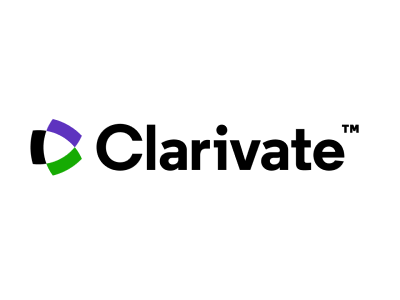China has the highest prevalence of type 2 diabetes (T2D) and obesity in the world, owing to growing trends in Western dietary patterns, sedentary lifestyles, and urbanization, making it a lucrative market for GLP-1 receptor agonist developers. According to Clarivate estimates, GLP-1 receptor agonists have experienced substantial market sales growth in China since the recent inclusion of several therapies from this drug class into the National reimbursement drug list (NRDL), especially Novo Nordisk’s Ozempic. However, since Ozempic is set to lose its patent protection in China in 2026, several biosimilar developers are actively eyeing this space.
Novo Nordisk has two different formulations of semaglutide in mainland China. Ozempic was approved for the treatment of T2D in April 2021, nearly four years after its approval in the US and EU markets. Later, in June 2024, the company received NMPA approval for Wegovy, an obesity treatment, after a lag of over two years compared to the US and EU markets.
Why so early in China?
As of this writing, the US FDA’s orange book enlists 21 patents for Ozempic, including two patents covering the drug substance. Both these patents were originally due to expire in 2026. However, Novo received a patent term adjustment (PTA) of 1,114 days, followed by a patent term extension (PTE) of 1,040 days, extending the patent term until 2031. Similarly, the European Union also granted a supplementary protection certificate (SPC) extending the patent term by five years until 2031.
Conversely, while Ozempic was approved at a later date in China, the product patent (CN101133082B) is due to expire in 2026. This is primarily because of the lack of PTA and/or PTE provisions being implemented in China at the time of Ozempic’s approval in April 2021. Of note, these provisions have now been introduced in China as part of the fourth amendment to the Chinese patent laws, effective as of June 2021. As per these regulations, PTE provisions will be applicable for products, process, and method of use patents directed to an innovative drug that has not yet been approved in China or overseas. While these provisions are also available for improved drugs (e.g., new salt forms, new indications), PTE cannot be sought for product patents if the molecule was approved for marketing in China prior to the implementation of these regulations on June 1, 2021. Furthermore, the applicant should file a request for PTA within three months of the patent grant. Therefore, we believe Novo will not be able to avail these benefits retrospectively for semaglutide’s product patent.
There are no separate method of use patents covering the use of semaglutide in T2D in China. However, Novo has a patent (CN109069589B) covering the use of semaglutide in reducing the risk of major adverse cardiovascular events (MACE) in patients with T2D and high cardiovascular risk, which is also an approved indication for Ozempic in China. While this patent is due to expire in 2037, it will be interesting to learn if any biosimilar developer can enter the market post the expiry of the product patent in 2026 by carving out this indication from its label.
Our analysis suggests that the remaining patents covering semaglutide in China relate to either the drug product (formulation and/or delivery device) or process.
What to expect
Hangzhou Jiuyuan Gene Engineering (owned by Huadong Medicine) is expected to be the first domestic manufacturer to secure approval for their version of the drug once semaglutide goes off-patent in 2026 in mainland China. The company filed for marketing approval of its semaglutide biosimilar for the treatment of T2D with the NMPA in April 2024. In June 2021, the company filed a petition with China National Intellectual Property Administration (CNIPA) indicating that the product patent was invalid due to lack of inventive step and sufficiency of disclosure. While CNIPA declared the patent invalid in September 2022, it was later upheld by the Beijing IP court in light of the post-filing data submitted by Novo Nordisk establishing that the written disclosure supports the hypothesis that semaglutide has a longer half-life and duration of action versus the prior art. As of this writing, Huodong has appealed this decision in the Supreme Court. After the proceedings are complete, the case is likely to be sent back to CNIPA for a re-trial. However, considering the time window left until patent expiry, we believe Huodong is likely to enter this market in 2026, irrespective of the outcome of the appeal.
With multiple biosimilars of semaglutide lined up for approval and launch and with Ozempic inching closer to achieving blockbuster status in China, we anticipate that the National Healthcare Security Administration (NHSA) will attempt to initiate centralized volume-based procurement (VBP) for semaglutide biosimilars once available. Therefore, we anticipate the inclusion of semaglutide biosimilars in a future VBP update, dampening Ozempic sales in mainland China.

Written by Ruchita Kumar
Senior Manager, Healthcare Research & Data Analytics, Clarivate
You may also like…
Pravin Anand conferred with the APAA Enduring Impact Award
Pre-eminent IP Lawyer and Managing Partner of Anand and Anand, Mr Pravin Anand, has been conferred with the...
The quiet power of confidentiality clubs in SEP litigation
In standard essential patent (SEP) disputes, especially those involving FRAND (Fair, Reasonable, and...
A $10 million patent win reduced to a $1 lesson in damages
In a decision that will resonate as a stark warning to patent litigants, the US Court of Appeals for the Federal...
Contact us to write for out Newsletter














